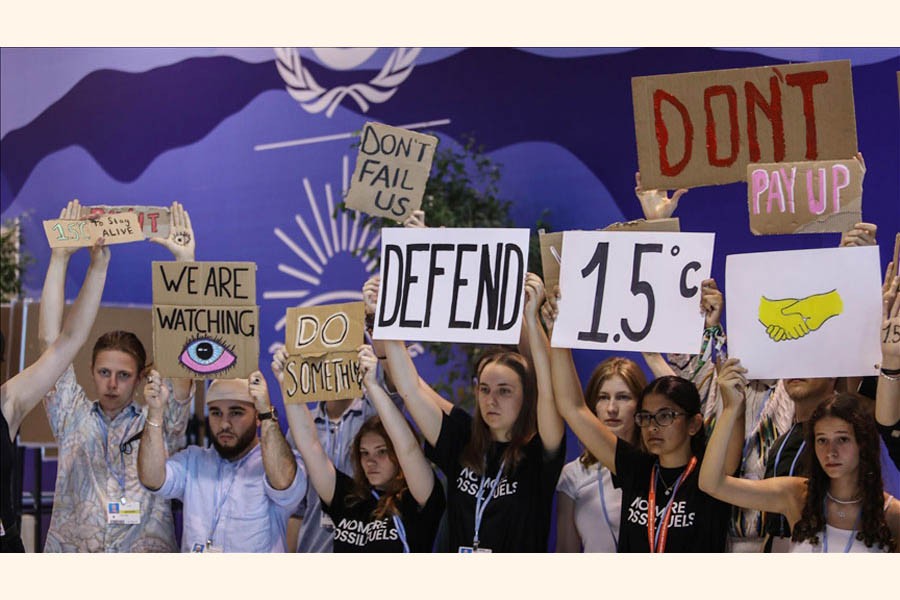United Nations Climate Summit (COP27) in Egypt (Sharm El-Sheikh) ended on November 20, 2022 with a happy note. The European Commission Vice President Frans Timmermans on behalf of the European Union (EU) made a dramatic announcement in the COP27 saying that EU accepted the key demand on financial help by creating a loss and damage fund for the poor climate vulnerable countries. He added that 'clear conditions' would be attached to any fund. A hard fought agreement was achieved to create a fund to help most climate vulnerable countries for their loss and damages due to the adverse climatic changes. Developing countries have been demanding for decades for such a fund so that they can get financial supports to fight irreparable loss and damage from global climate impacts. The industrially developed countries have been blamed for their historical roles for polluting the environment and releasing Green House Gases (GHG) in the atmosphere, which have accelerated the climatic changes and global warming. The climate change and extreme weather events have been hitting hard the developing nations offering draught, flood, heat wave, increased and intensive storms and cyclones, sea level rise, erosion of sea shorelines, river erosion, crop loss and food shortages, clean water supply shortages, health crisis, damages of physical infrastructure and huge population migration (climate refugees) etc.
Industrially developed countries have been reluctant about the 'loss and damage' fund, as they fear legal implications for contributing historically to the adverse climate changes and sufferings of the developing nations. United States (who has not yet responded to the proposal for loss and damage fund) and a number of rich countries resisted to create the loss and damage fund, as they fear it would lead to compensation payments. Despite the agreement in the COP27 for creating the loss and damage fund, it still remains a question as to how the said fund will be created (for example, Canadian Environment Minister informed that his country would be supportive of EU proposal for creating loss and damage fund but he held the opinion that countries like China, Saudi Arabia and Qatar should contribute to the fund given their emission of GHG and wealth.
Published reports suggest that the special climate envoy of the US President Mr. John Kerry in his COP27 closing remarks said that 'the fund which will be one among many available avenues for voluntary funding, should be designed to be effective and to attract an expanded donor base.' The Guardian (November 8, 2022) reported that approximately 2 trillion dollar would be needed each year by 2030 to help developing countries cut their GHG emissions and to cope with the adverse effects of extreme weather.'
Discussions on how to find the trillion dollar funds will carry on in the years to come and countries will need to settle on the definition of loss and damage (the UN did not clearly define who meets the criteria to be benefited from the loss and damage fund) and on the mechanism for structuring the ways to fund the climate vulnerable countries. However, it was agreed in COP27 to appoint a special committee who will examine the above issues in the years to come and prepare an outline for consideration in the COP28 climate summit expected to be held in UAE in late 2023.
Developing nations appreciate the agreement for creating loss and damage fund and it has helped building trust between the groups of climate vulnerable countries and the rich nations. Many activist groups consider that by agreeing to create the loss and damage fund, the rich nations agreed to provide a glimmer of hope for vulnerable countries and step forward for climate justice. The deal targets to broaden the loss and damage financing sources and encourage multilateral banks (like the World Bank) to support developing nations who has been struggling with climate changes.
Interesting enough to observe that the COP27 has failed to push concrete actions to phase out fossil fuels use (the main source of global climate crisis and the key reasons for global warming). The UN Secretary General Antonio Guterres has repeated his concern saying 'our planet is still in the emergency room. We need to drastically reduce emissions now and this is an issue this COP (COP27) did not address.'
In COP26 (held in Glasgow in 2021) participants agreed to focus on 1.5 degree Celsius limit for the earth's atmosphere to avoid irreversible consequences. The participants also agreed to return every year (to the COP summit) with the initiatives to strengthen the goal. A few such attempts were seen in the COP27 on the issue, but a resolution to cause GHG emissions to peak by 2025 was failed. Some countries wanted the COP27 to further include in the final declaration a commitment to phase down all fossil fuels. In the end, no further commitment was attained and the resolution repeated the same wordings as that in Glasgow.
So, the sealed COP27 climate deal (with an intention to create a loss and damage fund) hardly touches the interests of the rich nations to continue to burn fossil fuels unabated and continue global warming.
Mushfiqur Rahman is a mining engineer. He writes on energy and environment issues. [email protected]


